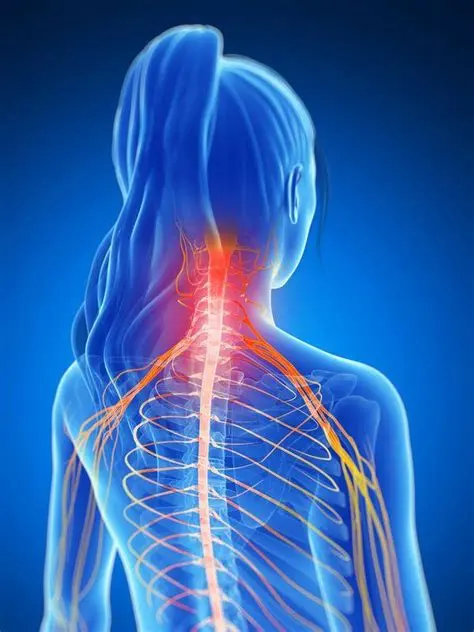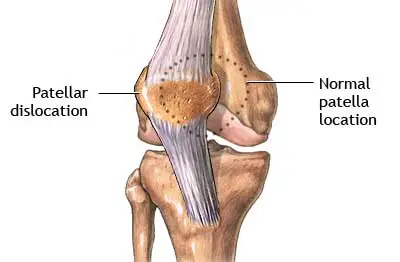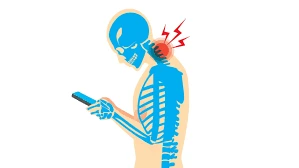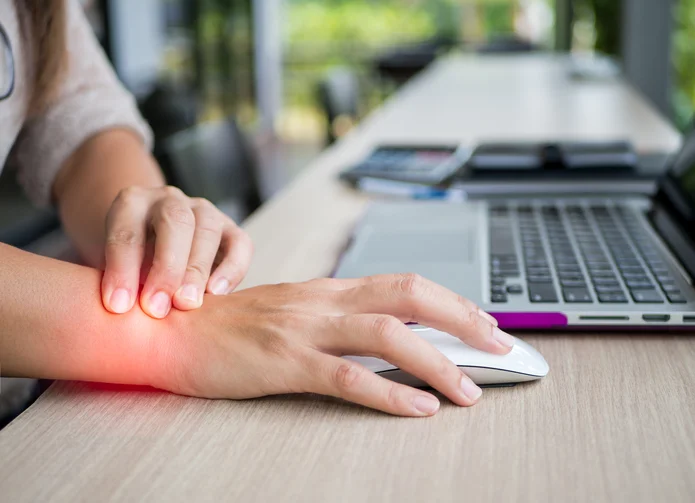Humeral Avulsion of the Glenohumeral ligament ( HAGL)
Table of Contents
What is a Humeral Avulsion of the Glenohumeral ligament (HAGL)?
Humeral Avulsion of the Glenohumeral Ligament (HAGL) is a rare injury that occurs in the shoulder joint. It is a type of Bankart lesion, which refers to any injury to the labrum (a ring of fibrous cartilage) or ligaments in the shoulder joint.
HAGL occurs when the glenohumeral ligament (which attaches the humerus bone to the shoulder blade) is torn off from the bone. This can happen as a result of a traumatic injury, such as a fall or a direct blow to the shoulder. The injury can also occur during a dislocation of the shoulder joint, where the humerus bone is displaced from the shoulder blade.
Symptoms of HAGL can include pain, swelling, and instability in the shoulder joint. Patients may also experience a decreased range of motion and weakness in the affected arm.
Diagnosis of HAGL is typically made through a physical examination and imaging studies, such as an MRI or a CT scan. Treatment for HAGL usually involves surgical repair of the torn ligament. Physical therapy may also be recommended to help patients regain strength and range of motion in the affected shoulder.
If you suspect that you have HAGL or any other shoulder injury, it is important to seek medical attention from a qualified healthcare provider.
Any of the three glenohumeral ligament segments, superior (SGHL), middle (MGHL), and inferior (IGHL), which is made up of the anterior inferior (AIGHL) and posterior inferior (PIHL), can be affected by a HAGL lesion. (PIGHL).
Up to 93% of HAGL instances involve injury to the AIGHL, while injuries to the PIGHL also occasionally result in clinical instability and pain. The majority of HAGL lesions exhibit instability, pain, weakness, and impaired function and are brought on by a traumatic incident like a dislocation or subluxation. The incidence of HAGL lesions has been reported between 7.5% and 9.3% in patients presenting with glenohumeral instability, though underdiagnosis is possible due to a variable profile of symptoms and common concomitant shoulder injuries.
When HAGL lesions are operated on, the results are better and the risk of recurrence is lower than when they are not, emphasising the importance of precise diagnosis and therapy.
Humeral avulsion of the glenohumeral ligament (HAGL) is a type of shoulder injury that occurs when the glenohumeral ligament is torn away from the humerus bone in the shoulder joint. The glenohumeral ligament is an important stabilizing structure of the shoulder joint that helps to hold the humerus bone in place.
HAGL injuries can be caused by traumatic events, such as a fall onto an outstretched arm, or from repetitive overuse of the shoulder joint. Symptoms of HAGL injuries may include pain, weakness, and instability in the shoulder joint, as well as decreased range of motion.
Diagnosing HAGL injuries may involve a physical examination, and imaging studies such as X-rays, MRI, or arthroscopy. Treatment options may include conservative measures such as rest, ice, physical therapy, and anti-inflammatory medication. In some cases, surgical intervention may be necessary to repair the torn ligament and stabilize the shoulder joint.
What is the Humeral Avulsion Of The Glenohumeral Ligament ( HAGL)?
Recurrent shoulder instability has a widely recognized cause of humeral avulsion of glenohumeral ligaments (HAGL).HAGL lesions are the effect of acute traumatic glenohumeral subluxation or dislocation. The most common joint lesion is the anterior avulsion of the inferior glenohumeral tendon from the humeral neck, but there are also posterior lesions.
A careful history and physical testing are serious in the diagnosis of HAGL lesions. MRI is the best imaginative study for diagnosing these lesions. Injection of intra-articular visual perception aids in the image. Most HAGL lesions affect repeated instability and need surgical improvement. Arthroscopic fixing with the use of adjunct portals has yielded promising results. They have succeeded in outstanding results with open surgical management using a subscapularis incision. Mini-open techniques need a limited incision in the lower half of the subscapularis muscles.
Causes:
Humeral Avulsion of the Glenohumeral Ligament (HAGL) is a rare injury that happens when the inferior glenohumeral ligament (IGHL) is pushed off the humerus, resulting in detachment of the ligament from its attachment site. The exact reasons for HAGL are not fully appreciated, but they have proposed several factors to change its development. Here are some probable causes of HAGL:
Trauma: HAGL is most usually associated with trauma, such as a fall onto an outstretched arm, a direct blow to the shoulder, or a dislocation of the shoulder joint. The force of the trauma can cause the IGHL to tear away from the humerus.
Shoulder dislocation: A shoulder dislocation can also cause HAGL. When the shoulder dislocates, the IGHL can be flexible or torn, leading to detachment from the humerus.
Repetitive stress: Repetitive overhead activities or sports that involve throwing, such as baseball or volleyball, can put repeated stress on the shoulder joint, leading to HAGL. This can cause microtrauma to the IGHL, eventually leading to detachment.
Shoulder impingement: Shoulder impingement occurs when the tendons and bursae in the shoulder are compressed, causing pain and inflammation. Impingement can also cause stretching and tearing of the IGHL, leading to HAGL.
Genetic factors: Some individuals may be more susceptible to HAGL due to genetic factors. For example, certain genetic mutations may affect the strength and integrity of the ligaments in the shoulder joint, making them more prone to detachment.
Signs and Symptoms:
Signs and symptoms of a dislocation or rotator cuff separate, such as
- Inability to adjust the arm’s orientation, significantly when the shoulder is extended away from the body and the top of the arm is twisted backward.
- Numbness of the arm.
- Visibly displaced shoulder.
- Some dislocations solution in the shoulder appears square.
- No bone on the side of the shoulder shows the shoulder has become dislocated.
- Severe persistent pain after instability event
- Recurrent instability
- Significant pain is sometimes felt along the arm past the elbow.
Classification Of Humeral Avulsion Glenohumeral Ligament:
Humeral Avulsion of the Glenohumeral Ligament (HAGL) is an infrequent but significant injury of the shoulder that can induce instability and pain in the joint. The classification of HAGL is based on the location and extent of the injury. There are two main classifications of HAGL:
- Partial-thickness HAGL: In this type of HAGL, only a portion of the IGHL is torn or detached from the humerus. We can further classify this into two subtypes:
Type 1: In this subtype, the tear is located at the humeral insertion site, where the IGHL attaches to the humerus.
Type 2: In this subtype, the tear is located in the mid-substance of the IGHL, meaning that it occurs within the ligament itself rather than at the attachment site.
- Full-thickness HAGL: In this type of HAGL, the IGHL is absolutely torn or detached from the humerus. Full-thickness HAGL can also be further classified into two subtypes:
Type 3: In this subtype, the tear affects only the IGHL, without any damage to other structures surrounding the shoulder joint.
Type 4: In this subtype, additional injuries to other structures in the shoulder joint, such as the rotator bond, labrum, or biceps tendon, accompanied the IGHL tear.
The classification of HAGL is important because it can affect the treatment options and outcomes for the injury. In general, partial-thickness HAGL may be prepared conservatively with rest, immobilization, and physical therapy, while full-thickness HAGL may need surgical intervention to repair the torn ligament and any damage to other structures in the shoulder joint.
Risk Factor in Humeral Avulsion of the Glenohumeral Ligament
Humeral Avulsion of the Glenohumeral Ligament (HAGL) is a relatively rare injury that can affect individuals of any age and activity level. However, there are certain risk factors that may increase the likelihood of developing HAGL. Here are some of the most common risk factors associated with HAGL:
- Sports participation: HAGL is often associated with sports that involve overhead activities, such as baseball, volleyball, tennis, and swimming. These activities can place significant stress on the shoulder joint, increasing the risk of injury.
- Trauma: HAGL can be caused by direct trauma to the shoulder joint, such as a fall or collision. Individuals who participate in contact sports or who have a history of shoulder injuries may be at increased risk of developing HAGL.
- Age: While HAGL can affect individuals of any age, it is more commonly seen in individuals over the age of 30. This may be due to age-related changes in the structure and function of the shoulder joint, as well as a higher incidence of rotator cuff tears and other shoulder injuries in older adults.
- Gender: HAGL is more commonly seen in males than females, although the reasons for this are not entirely clear.
- Hyperlaxity: Individuals who have hyperlaxity, or excessive flexibility in their joints, may be at increased risk of developing HAGL. This is because hyperlaxity can cause increased stress on the ligaments and other structures of the shoulder joint, leading to injury.
- Previous shoulder injuries: Individuals who have a history of shoulder injuries, such as rotator cuff tears, labral tears, or dislocations, may be at increased risk of developing HAGL. This is because these injuries can weaken the shoulder joint and make it more prone to further injury.
Diagnosis:
Physical examination:
- Provocative tests
- Apprehension and relocation tests
- Load and shift test
- Posterior stress and posterior jerk tests
- Sulcus sign in neutral and external rotation shoulder
Neurovascular test: Check axillary nerve function in the supply area
Imaging:
Radiographs:
Suggested opinion:
- True AP pictures with the rotation set to internal and neutral
- Skull Y viewpoint
- side axillary view
Findings: Hypoplasia, humeral head fractures, and glenoid rim fractures
Choices for vistas:
- 45-degree oblique radiograph taken in the anterior plane by Garth
- Avulsion of the midline cortex and a fleck of bone inferior to the anatomic neck
Arthrogram
- Typically, a dye can be found in the subcoracoid cavity, biceps sheath, and axillary pouch.
- HAGL: Dye flees inferiorly in the form of a crescent
CT
Indications:
- Lower usefulness than MRI For MRI contraindications, consider combining an arthrogram
- Views are best on a horizontal plane.
- Oberlander reported a posterior bony HAGL lesion.
MRI
Indications
- The ideal method to identify HAGL.
- After an episode of instability, there may be recurrent instability or persistent discomfort.
Views: If the injury is more than 7–10 days old and there is recurrent instability or persistent discomfort following an episode of instability.
T2 weighted, fat-suppressed coronal oblique MRI
T2 weighted fat-suppressed sagittal oblique MRI
Findings:
J Sign Pathognomonic for HAGL inferior pouch usually appears in U-Shaped HAGL has a J-Shaped inferior pouch appearance. Chronic injuries may be problematic to see because of the IGHL scar on the capsule, which could enable a dye to pass through a tear inferiorly.
Treatment :
The severity of the injury, the extent of associated damage to other shoulder joint structures, the patient’s general health, and their level of exercise all play a role in how the humeral avulsion of the glenohumeral ligament (HAGL) is treated. The following represent some of the most popular HAGL therapy options:
Conservative treatment: Rest, ice, and physical rehabilitation are some examples of conservative treatments for HAGL. Enhancing the range of motion, fortifying the muscles surrounding the shoulder joint, and lowering discomfort and inflammation are all possible with physical therapy. Injections of steroids or anti-inflammatory drugs may also be suggested to help control symptoms.
Surgery may be required if non-operative care is ineffective or if there has been severe harm to other shoulder joint tissues. The avulsed glenohumeral ligament is usually reattached to the bone during surgery for HAGL using sutures or anchors. Other surgical treatments, such as rotator cuff repair or labral repair, may also be required, depending on the severity of the associated damage.
Medical Surgery and physical therapy of Humeral Avulsion of the Glenohumeral Ligament
Medical surgery and physical therapy are both important components of the treatment plan for the Humeral Avulsion of the Glenohumeral Ligament (HAGL). Here’s a more detailed look at each of these treatment approaches:
Medical Surgery:
Surgery may be necessary for individuals with HAGL who do not respond to conservative treatment or have significant damage to other structures in the shoulder joint. Surgery typically involves reattaching the avulsed glenohumeral ligament to the bone using sutures or anchors. The specific surgical approach will depend on the extent of the injury and the individual’s overall health and activity level. In some cases, other surgical procedures such as rotator cuff repair or labral repair may also be necessary.
Surgeries such as:
Open HAGL: Anterior or posterior repair through arthroscopy
Following surgery, the individual will likely need to wear a sling or brace to immobilize the shoulder joint and allow for proper healing. Pain medication and physical therapy may also be prescribed to help manage pain, improve range of motion, and prevent complications such as a frozen shoulder.
Immobilization: In some circumstances, it may be necessary to immobilize the shoulder joint for the purpose to promote appropriate healing. This could entail a few weeks or months of wearing a shoulder brace or sling.
Physical Therapy:
Physical therapy is an important component of the treatment plan for HAGL, both before and after surgery. Prior to surgery, physical therapy may be used to help improve the range of motion, reduce pain and inflammation, and strengthen the muscles around the shoulder joint in preparation for surgery.
Following surgery, physical therapy is typically necessary Rehabilitation therapy and medical surgery both play significant roles in the course of treatment for the humeral avulsion of the glenohumeral ligament. (HAGL). Here is a closer examination of every one of these therapy modalities:
Physical therapy is frequently required after surgery to help the shoulder joint regain strength, range of motion, and general functionality. Gentle range of motion exercises, shoulder and upper back muscle-building routines, posture and shoulder mechanics drills, and other physical therapy exercises are all possible. In order to increase shoulder mobility and ease pain, the physical therapist may also employ manual treatment methods like massage or joint mobilization.
It helps restore strength, range of motion, and overall function of the shoulder joint. Physical therapy exercises may include a gentle range of motion exercises, strengthening exercises for the shoulder and upper back muscles, and exercises to improve posture and shoulder mechanics. The physical therapist may also use manual therapy techniques such as massage or joint mobilization to help improve shoulder mobility and reduce pain.
Rehabilitation: To help the shoulder joint regain its strength, range of motion, and general functionality after surgery, rehabilitation is frequently required. Exercises from physical therapy may be advised to help the muscles around the shoulder joint become stronger, increase suppleness, and guard against further harm.
Exercise helps increase muscle strength.
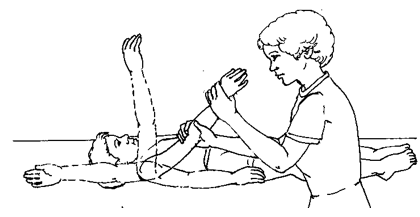
Range of motion exercises include:
- Shoulder flexion
- Shoulder extension
- Shoulder abduction
- Shoulder adduction
- Shoulder internal and external rotation
- Pendulum exercise
Initially, start the active movement in the available range. As the patient can do movements easily, progress to active assisted exercise, which will be in full range.
Joint mobilization: Glides are used to increase the range of motion of the shoulder joint.
- Anterior glide is applied to increase shoulder extension and external rotation
- Posterior glide is applied to increase shoulder flexion and internal rotation
- Inferior glide to increase shoulder abduction.
Strengthening exercises:
As movements are achieved. then our next step is to increase the strength of the muscle surrounding the shoulder joint. to increase strength, the following exercises are to be done:
- Isometric exercise of the shoulder joint in flexion, extension, abduction, and adduction by means of manual and mechanical resistance such as theraband, dumbbells.
- Scapular stability exercises
- Upper back exercises

After surgery, there is also a need for shoulder strengthening exercises following sling immobilization.
Modalities: Modalities help in relieving pain, swelling, and inflammation and thereby increase ROM. Modalities may include:
- Cryotherapy: Cold may reduce swelling and pain.
- Hot treatment: Hot treatment may include a hot water bath or hot pack treatment. Hot decreases pain
- Modaliites: IFT, SWD, TENS, US
Lifestyle changes: To lower the risk of further injury, lifestyle changes may be advised depending on the person’s level of exercise and general health. This might entail staying away from athletics or activities that put a lot of strain on the shoulder joint, using good shoulder mechanics when exercising, and maintaining general shoulder flexibility and strength.
Complication:
Humeral Avulsion of the Glenohumeral Ligament (HAGL) is a relatively rare but potentially serious injury that can cause instability and pain in the shoulder joint. While many cases of HAGL can be successfully treated with conservative measures or surgery, there are several possible complications that can arise if the injury is not properly managed or if treatment is delayed. Here are some potential complications of HAGL:
- Shoulder instability: HAGL can cause instability in the shoulder joint, meaning that the joint is more prone to dislocation or subluxation (partial dislocation). This can lead to ongoing pain, weakness, and limited range of motion in the affected shoulder, as well as an increased risk of further injury.
- Rotator cuff tears: HAGL can be associated with tears in the rotator cuff, which are the group of muscles and tendons that support stabilizing the shoulder joint. Rotator cuff tears can generate pain, weakness, and difficulty with overhead activities.
- Labral tears: The labrum is a ring of cartilage that surrounds the socket of the shoulder joint, helping to provide stability and support. HAGL can be associated with tears in the labrum, which can cause pain, clicking, and instability in the shoulder joint.
- Biceps tendon injuries: The biceps tendon attaches to the shoulder joint and can be damaged in cases of HAGL. This can cause pain, weakness, and deformity of the affected arm.
- Frozen shoulder: HAGL can lead to the development of a frozen shoulder, which is a condition characterized by stiffness, pain, and limited range of motion in the shoulder joint. A frozen shoulder can be a complication of prolonged immobilization or delayed treatment of HAGL.
- Chronic pain: HAGL can cause chronic pain in the shoulder joint, which can limit mobility and interfere with daily activities.
Summary:
The HAGL lesion is a possibly significant reason for anterior instability in the glenohumeral joint. They should consider the HAGL lesion later in any traumatic shoulder injury, including anterior shoulder dislocation, or in any patient presenting with repeated instability. It should be noted that the HAGL lesion frequently manifests along with shoulder disease, such as rotator cuff tears in the shoulder joint.
Healthcare professionals should evaluate the need for and the recovery associated with arthroscopic surgery against an attempt at non-surgical treatment for athletic populations. This case incontestable the successful implementation of a conservative plan of management, suggesting that arthroscopic surgery may not be necessary in some cases.
FAQs:
What kind of joint is the glenohumeral?
The glenohumeral (GH) joint, which connects the upper limb to the trunk, is a genuine synovial ball-and-socket type diarthrodial joint. One of the shoulder complex’s four joints, it is. The glenoid cavity of the scapula and the humeral head is used to construct this joint.
What causes humeral avulsion of the glenohumeral ligament?
The most common cause of humeral avulsion of the glenohumeral ligament is anterior shoulder dislocation brought on by thrust hyperabduction and external rotation of the arm.
What are the three 3 main ligaments of the glenohumeral joint?
Glenohumeral ligaments-It is composed of a superior, middle, and inferior ligament, these three ligaments unite to form the glenohumeral joint capsule connecting the glenoid fossa to the humerus.
What four motions do the glenohumeral joint actions involve?
Flexion: The straight anterior movement of the humerus.
Extension: Straight posterior movement of the humerus.
External rotation: It is the laterally directed shift of the humerus about its long axis away from the midline.
Internal Rotation: It is the internal rotation of the humerus about its long axis in the direction of the midline.How is a ruptured glenohumeral ligament managed?
Patients should expect to ice the shoulder and put it in a sling for at least 4-6 weeks to allow the labrum time to reattach to the bone’s edge and recover strength. For pain control, anti-inflammatory drugs and, in rare instances, an office-based cortisone injection, may be suggested.


